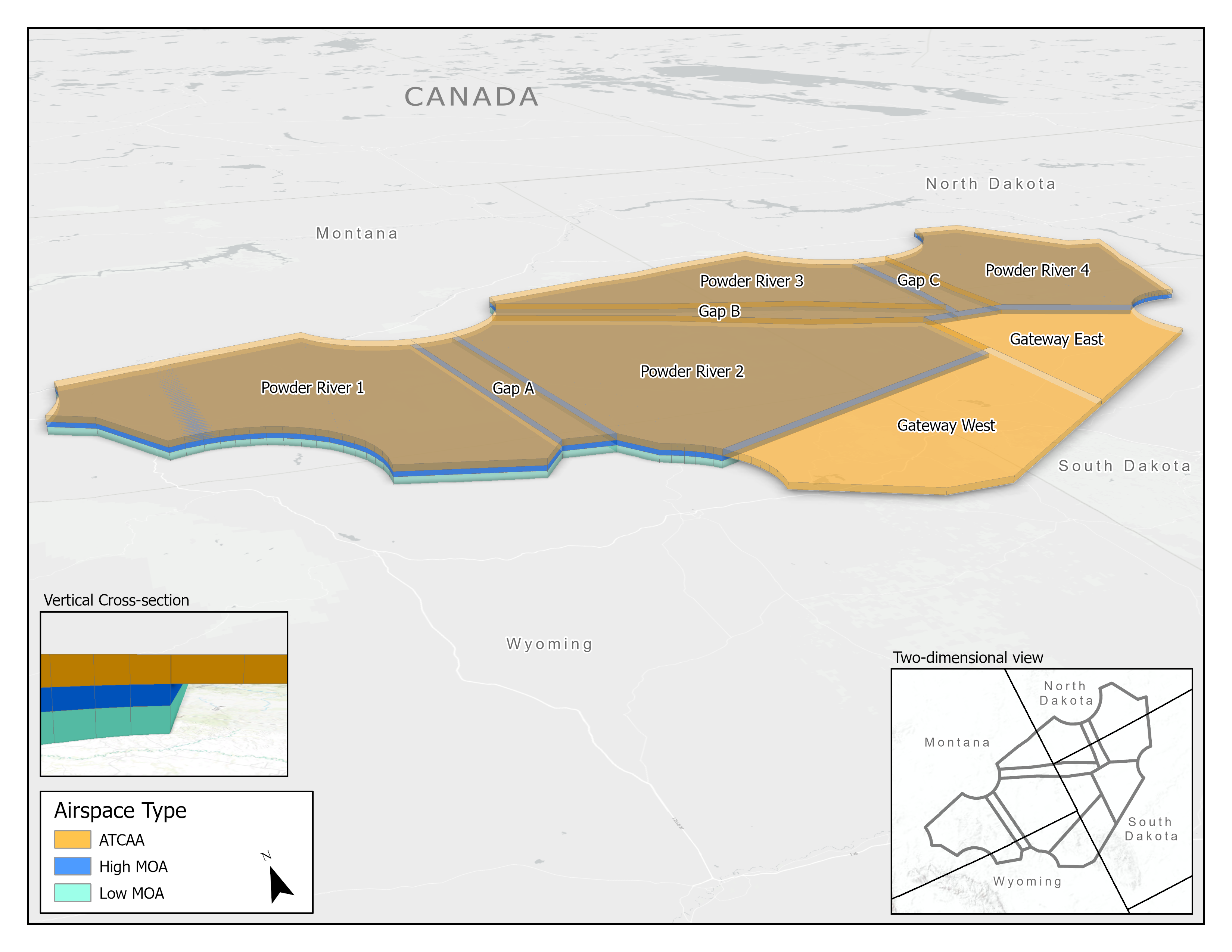MOAs are a type of Special Use Airspace and consist of airspace of defined vertical and lateral limits established for the purpose of separating certain military training activities from Instrument Flight Rules (IFR) traffic. Whenever a MOA is being used, nonparticipating IFR traffic may be cleared through a MOA if IFR separation can be provided by Air Traffic Control (ATC). Otherwise, ATC will reroute or restrict nonparticipating IFR traffic. Non-participating aircraft flying under Visual Flight Rules (VFR) may transit an active MOA by employing see-and-avoid procedures. Pilots operating under VFR should exercise extreme caution while flying within a MOA when military activity is being conducted. The activity status (active/inactive) of MOAs may change frequently and is published in the Federal Aviation Administration NOTAM (Notice to Airmen) system. Prior to entering an active MOA, pilots should contact the controlling agency for traffic advisories.
Overview of Proposed Action
What is the PRTC?
The PRTC is a group of Military Operations Areas (MOAs) and Air Traffic Control Assigned Airspaces (ATCAAs), which overlays parts of South Dakota, North Dakota, Wyoming, and Montana. Currently the complex is the day-to-day (primarily Monday through Friday) training complex for B-1 aircrews from the 28th Bomb Wing (28 BW) at Ellsworth AFB and B-52 aircrews from the 5th Bomb Wing (5 BW) at Minot AFB. In addition to day-to-day training operations, the PRTC hosts Large Force Exercises (LFEs) for joint forces to participate in realistic combat training scenarios. The PRTC currently supports an average of 3,234 sorties annually (a sortie is the takeoff, mission, and landing of a single aircraft).
MOAs are a type of Special Use Airspace established for the purpose of separating certain military training activities from other air traffic. MOAs are used for non-hazardous activities such as air combat tactics, aerobatics, formation training, and low-altitude tactics. MOAs are established in lower altitudes, below 18,000 feet.
ATCAAs are airspace of defined vertical and lateral limits, assigned by air traffic control, for the purpose of providing air traffic segregation between the specified activities being conducted, within the assigned airspace and other traffic. ATCAAs are typically established in higher altitudes, above 18,000 feet.
The primary day-to-day MOAs include Powder River (PR) 1, 2, 3, and 4 along with their associated ATCAAs that exist above the MOAs. The PR 1, 2, and 3 MOAs are vertically segmented into a low and high MOA. The PR4 MOA does not have a low MOA. The low and high MOAs with an ATCAA above provides training space from 500 feet up to 26,000 feet, while the PR 4 MOA/ATCAA provides space from 12,000 feet up to 26,000 feet. The Gateway West ATCAA is also used day-to-day and provides training space from 18,000 feet up to 26,000 feet. The Gap A, B, and C MOAs/ATCAAs and the Gateway East ATCAA are only available during LFEs.
 |
What is the Proposed Action?
The Proposed Action is to address shortfalls in aircrew readiness by improving day-to-day training and increasing the capability of LFEs hosted at PRTC to meet emerging threats to National Security.
Specifically, the Proposed Action includes:
- Actions to improve day-to-day operations:
- Raise the ceiling of the most used ATCAAs
- Change times of use for PRTC
- Actions to improve training capability of LFEs:
- Raise the ceiling of all of PRTC
- Increase the total days allowed annually
- Increase duration allowed for individual LFEs
There are no proposed changes to the altitude or horizontal dimensions of any of the MOAs (which provide low-level training airspace). All of the proposed changes address shortfalls in higher altitudes (above 26,000 feet).
Frequently Asked Questions
